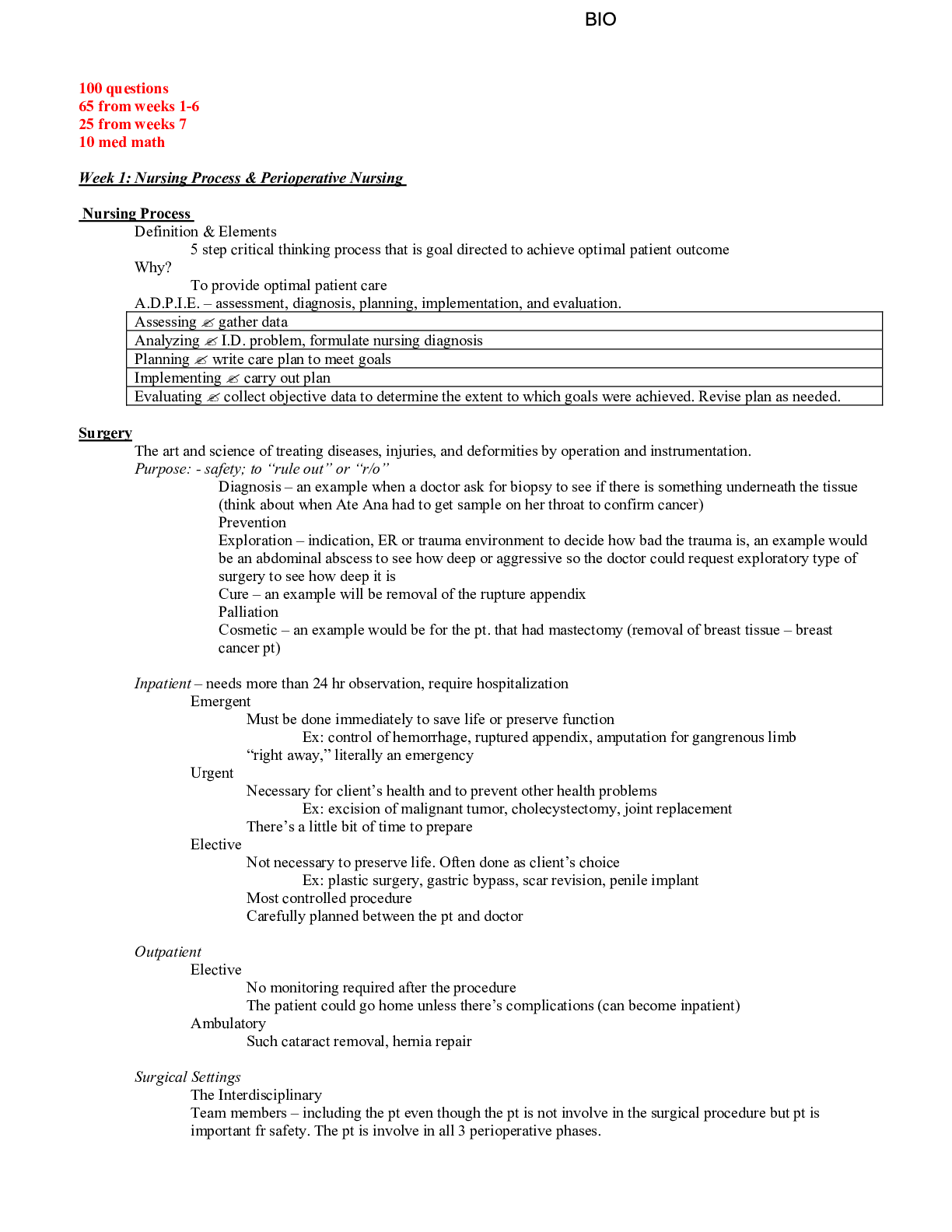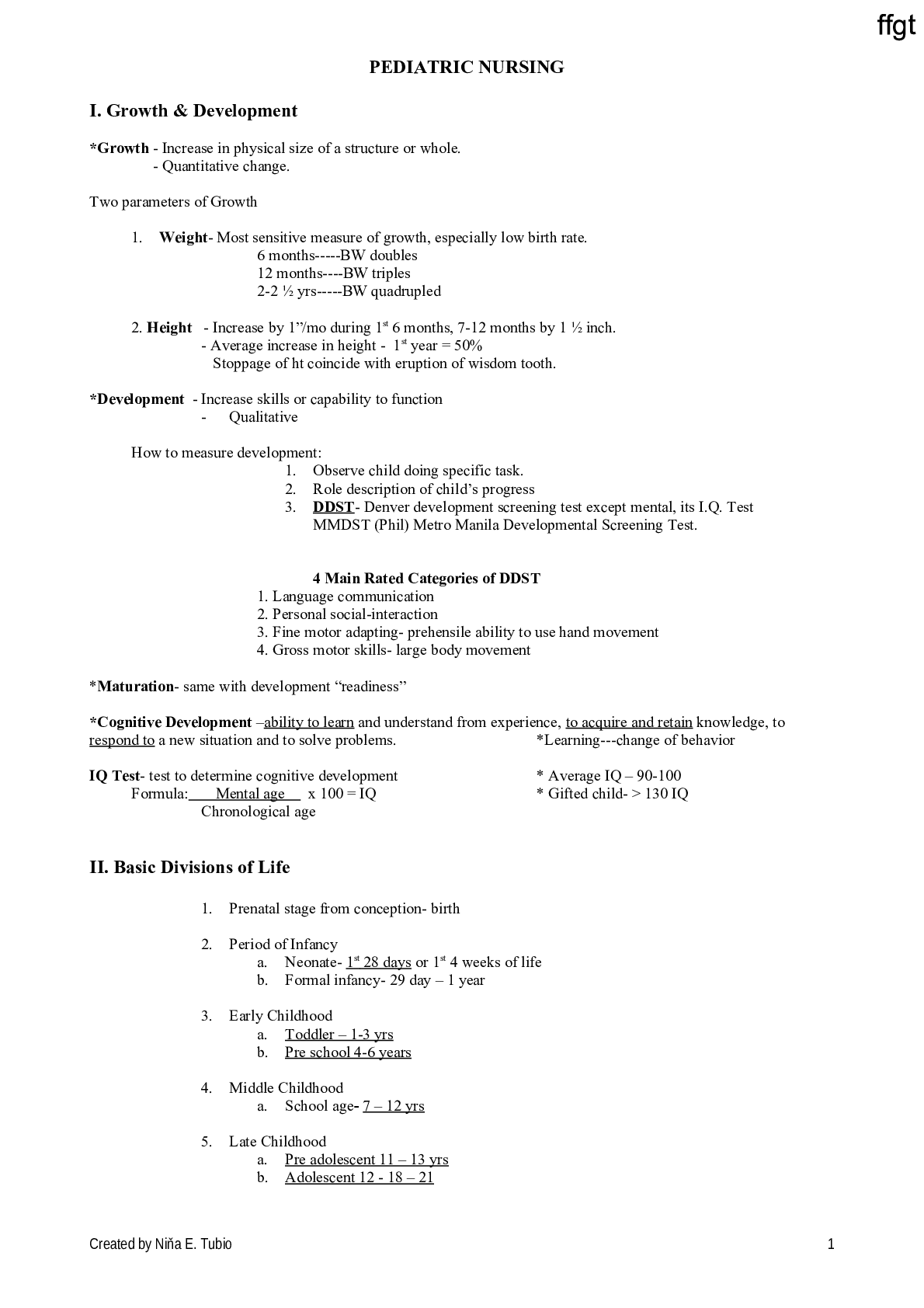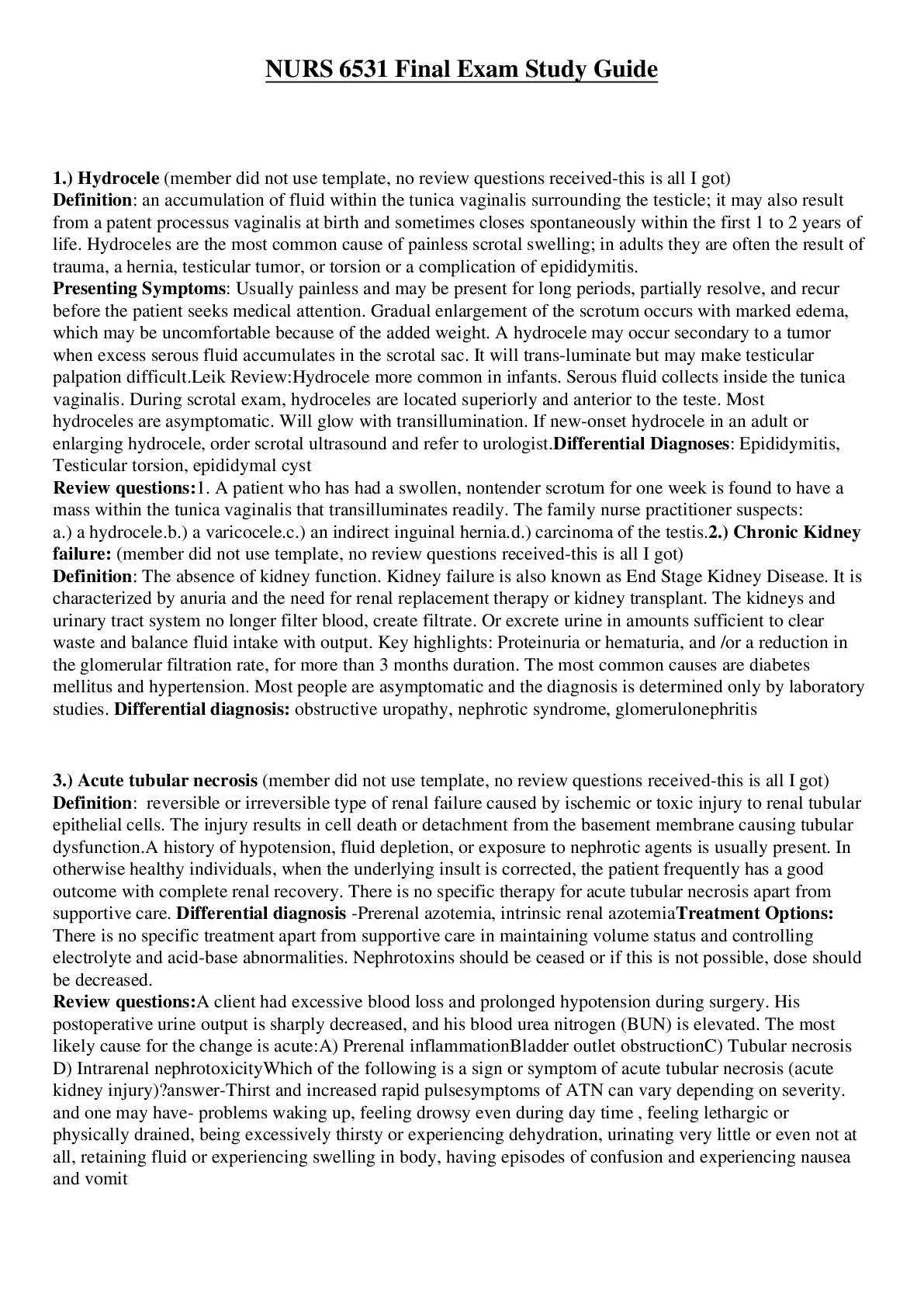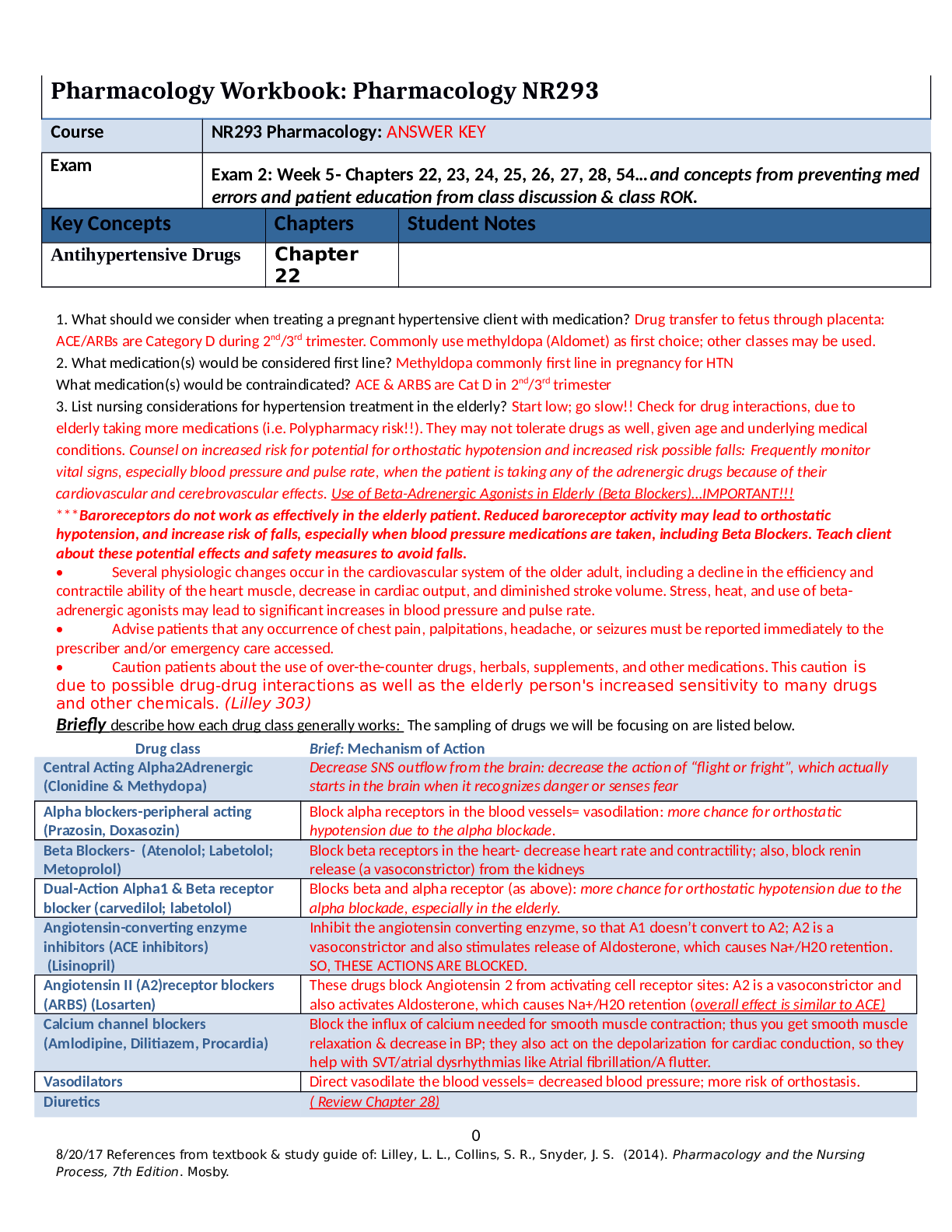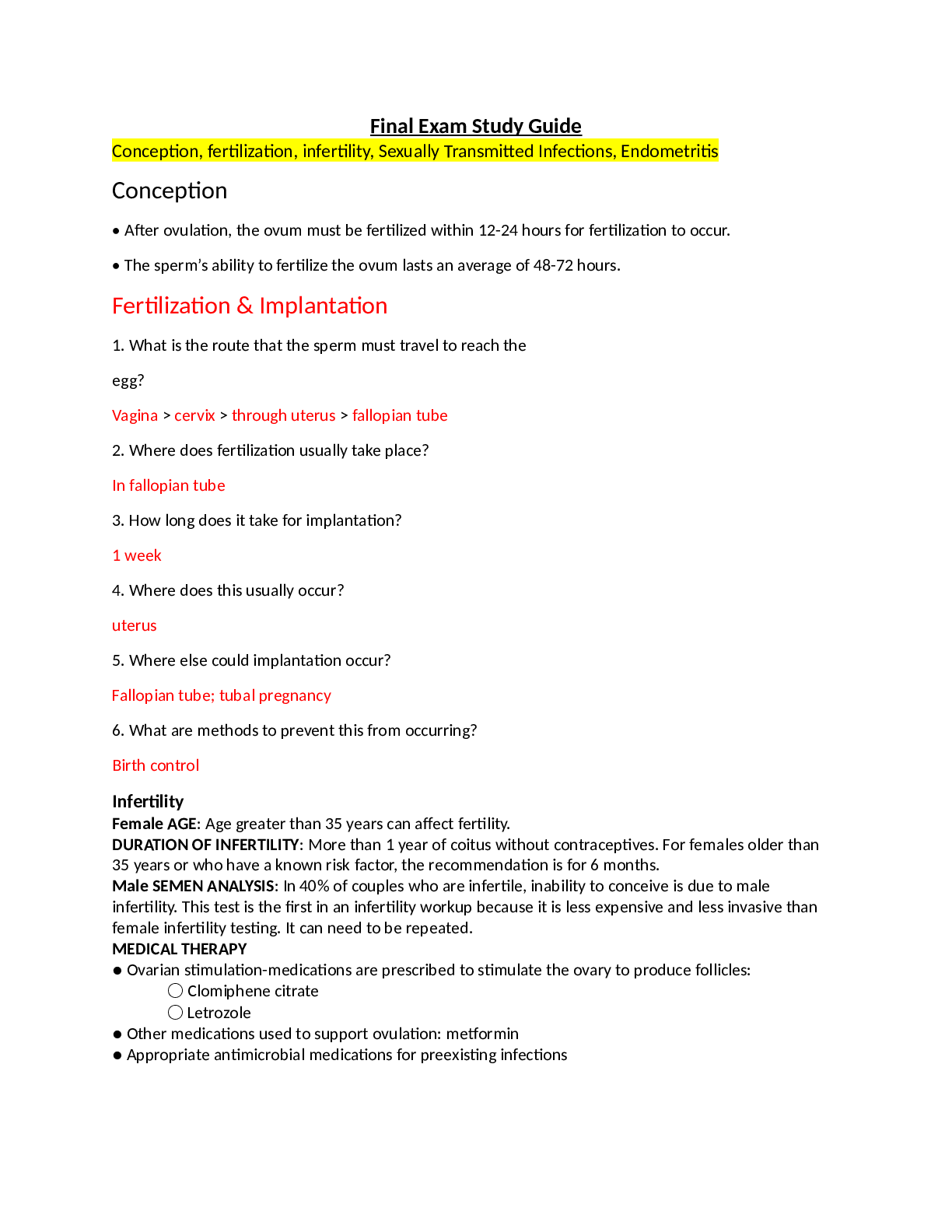*NURSING > STUDY GUIDE > ASM 275 UNIT 3 LABS. Skeletal Trauma and Timing of Bone Injury (Lab 12) (All)
ASM 275 UNIT 3 LABS. Skeletal Trauma and Timing of Bone Injury (Lab 12)
Document Content and Description Below
Learning Goals By the end of this lab, the student will be able to: · Identify key aspects of the anatomy of the human pelvis. · Assess the sex of a decedent using features of pelvic anatomy. ·... Apply ordinal data standards to a forensic problem. · Describe the range of human variation in the human pelvis. · Apply trait weighting standards to more ambiguous cases. Introduction Trauma is defined as an injury or disruption caused to living tissue by any external force. It was only recently that forensic anthropologists began to consult on the interpretation of trauma visible on the skeletons of victims of violent crimes. However, this aspect of the forensic analysis has become increasingly important over the last few decades. With improved understanding of fracture formation processes and a growing number of experimental studies documenting how fractures propagate in the skeleton it is now expected that the forensic anthropologist provides a description of trauma during their investigation. The goal is to provide an accurate and complete description of the wounds, but not necessarily to offer a specific interpretation that may overreach beyond what the data can support in a court of law. The Daubert standards (lab 2) must always be considered. The ability to recognize and interpret trauma-related signatures contributes to the death investigation in several ways. First, trauma analysis can provide information that is useful to the medical examiner for declaring the manner of death (e.g., homicide, suicide, accidental). Second, trauma analysis can help identify the nature of the force that caused the injury, which may lead to the murder weapon. Third, by identifying the number of wounds and their relationship to each other, the investigator can determine whether one or more implements was used, which possibly speaks to the number of individuals involved in committing a crime. Fourth, ascertaining the sequence of injuries speaks to the circumstances of the crime scene and addresses the fundamental question - what happened? Fifth, trauma analysis can be used to reconstruct the spatial relationship between the attacker(s) and the decedent, which can corroborate or falsify suspect or witness testimony. And sixth, the ability to recognize healed trauma, i.e., trauma not directly related to the moment of death, can provide information on the decedent's medical history that could be used to positively identify them. Repeated, healed or healing injuries may also speak to patterns of domestic violence and child abuse. Forensic anthropologists classify trauma with respect to three broad classes of weapons: projectile gunshots (handguns), blunt force objects (bats), and sharp force objects (knives). However, these broad categories may fail to categorize all traumatic injuries. For example, a bullet that impacts the skull after losing much of its velocity will create a wound more similar to blunt force trauma than a typical penetrating gunshot wound. For this reason, forensic anthropologists also recognize the importance of velocity in determining the extent of a traumatic injury. Two broad classes of weapons are identified: high velocity projectiles and low velocity objects. The area of direct impact also matters. Sharp force trauma physically impacts the body with low velocity over a very small area, thus making a cut in the bone but not shattering it. Blunt force trauma physically impacts the body with low velocity over a relatively wide area, often shattering the bone but not penetrating it. High velocity projectile trauma often combines penetrating wounds (bullet holes) and more significant destruction of the surrounding tissues. Whether a bone fractures when put under stress depends on the energy it must absorb from the foreign object. Objects moving with higher velocity impart more energy onto the skeletal tissues, resulting in more damage. Identifying the nature of the force (projectile, blunt force, sharp force) impacting the body is one of the primary goals of the forensic analysis. In addition to determining the type of force impacting the body the forensic anthropologist is also interested in determining the timing of impact with respect to the individual's death. Here again, three timelines are typically discussed: antemortem trauma is that which occurred prior to death, perimortem trauma is that which occurred around the time of death, and a postmortem alteration is bone damage that occurred after the time of death. These are not clearly distinguishable categories (as discussed below) and it is often very difficult to determine whether a wound is perimortem or postmortem. Bone Biology and the Biomechanics of Bone Fracture The microscopic structure of bone was discussed previously in lab 3. However, these details are directly relevant for understanding how a bone fractures and a brief review is warranted. Bone is a composite material, being comprised of an organic component and an inorganic component. The organic component mostly consists of collagen fibers, a connective tissue that makes bones elastic and pliable. The inorganic component consists mostly of calcium phosphate salts (hydroxyapatite) that are crystalline in structure and embedded along the collagen fibers. Hydroxyapatite gives bones rigidity. In healthy adults, the collagen fibers are oriented parallel to the shaft of a long bone, which creates structural rigidity. This is called lamellar bone (see lab 3). Bone that is diseased is composed of woven bone, in which the collagen fibers are oriented haphazardly (Figure 2). The initial healing of a fracture also uses woven bone to stabilize the break. Bone disease in which new bone has been laid down in a quick and disorganized manner. [2] Although all bone is composed of collagen and hydroxyapatite this fact alone does not explain or predict how any specific traumatic impact will result in a fracture. Bone is heterogeneous, meaning the bones in the body vary considerably in shape, thickness and the distribution of cortical and trabecular bone (see lab 3 and 4). As described by Symes et al. (2012), bone is also anisotropic, which means it responds to external forces differently depending on the direction the force is applied. In other words, for any given element of the human skeleton the same magnitude of force applied from different directions will result in different fracture patterns due to the intrinsic qualities of the bone. For example, the ends of long bones have a thin outer layer and are mostly composed of spongy trabecular bone. The long bone ends, then, will respond differently to external stress than the middle of the shaft, which is mostly thick, cortical bone. The most common directional descriptions of force are presented in Figure 3. Directional forces impacting the body. [3] Under tension the ends of the bones are pulled apart, which stretches the collagen fibers along their length. Fractures caused by tension are often clean breaks that have few secondary fracture lines. Under compression the ends of the bone are pushed together causing multiple breaks and secondary fracture lines that radiate from the point of impact. Under shearing the force impacts the body at an oblique angle, which often causes the two fracture ends to be misaligned because they are pushed in opposite directions. Under torsion the force is also directed obliquely but with one end of the bone being stationary. This causes fracture lines to spiral down the axis of the bone shaft. In real life, most fractures result from a combination of these directional forces. However, it is useful to consider tension and compression as complementary fracture mechanisms, which leads to the first axiom of interpreting skeletal trauma (Currey, 1970; Zephro and Galloway, 2014). The first axiom for understanding bone fracturing patterns is: bone is weaker under tension than under compression. This means that bone will fracture first at areas where tensile forces are experienced. The ability of bone to withstand compression is nearly twice that of the ability of bone to withstand tension. Consider the diagram of a long bone shaft shown in Figure 4. A force is applied from the top of the bone striking it at a 90-degree angle. The side of the bone being struck is under compression because the bone is bending under the force of the blow. The small black arrows on the top of the long bone shaft indicate the direction of bone movement under compression. The bone at the immediate point of impact is physically being squeezed together. The opposite side of the bone is under tension as the collagen fibers are being pulled apart. In other words, the bone is being stretched on the opposite side that the force is applied. Because bone is stronger under compression than tension it will fracture first on the opposite side of the bone from which the force was applied. This fact alone allows the forensic anthropologist to determine the direction of force. [Show More]
Last updated: 2 years ago
Preview 1 out of 45 pages
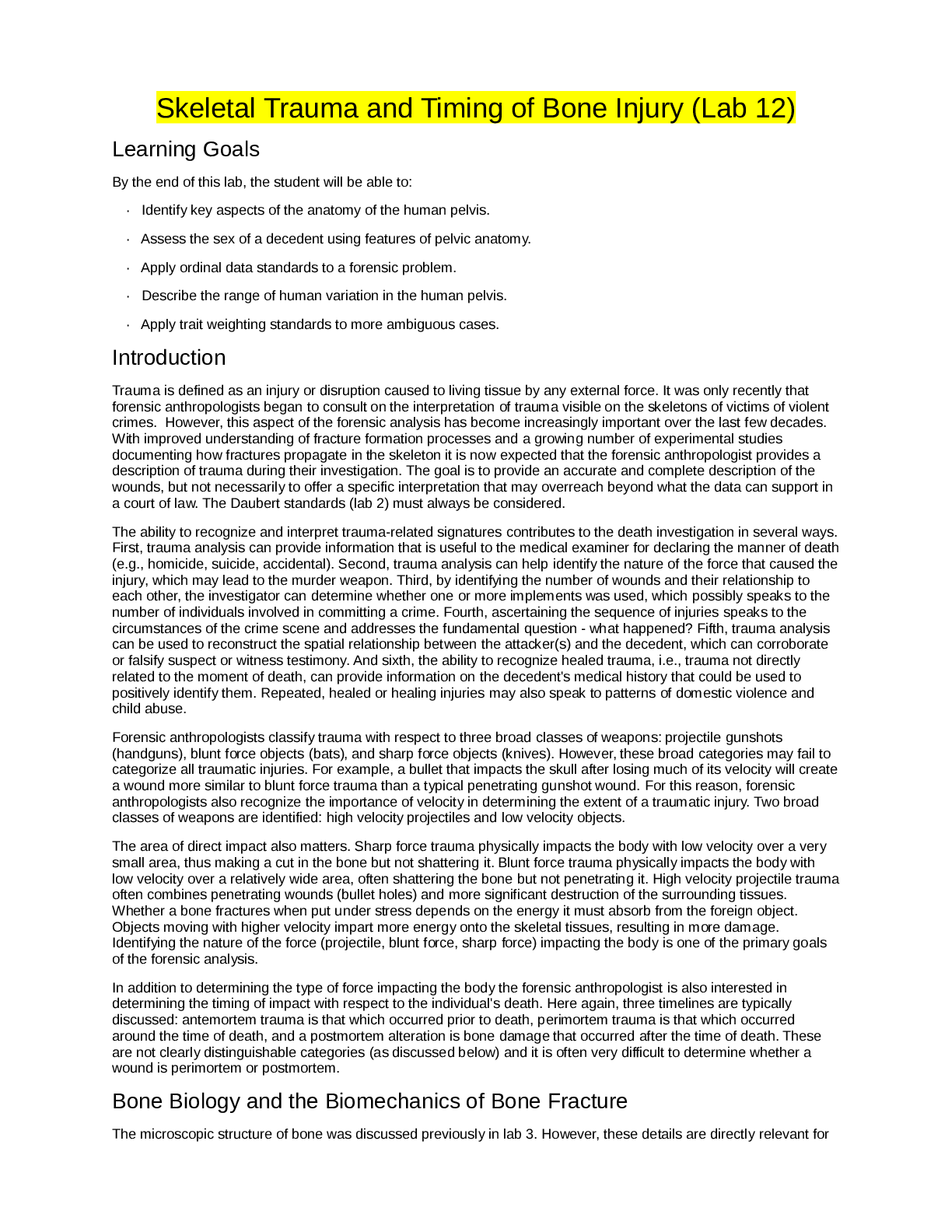
Buy this document to get the full access instantly
Instant Download Access after purchase
Buy NowInstant download
We Accept:

Reviews( 0 )
$7.00
Can't find what you want? Try our AI powered Search
Document information
Connected school, study & course
About the document
Uploaded On
Apr 28, 2022
Number of pages
45
Written in
Additional information
This document has been written for:
Uploaded
Apr 28, 2022
Downloads
0
Views
129



